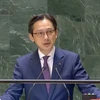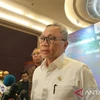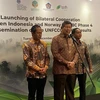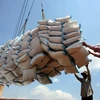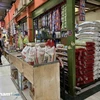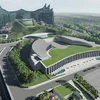Developing Asian countries will maintain a strong economic growth of 6.3 percent in both 2015 and 2016 supported by soft commodity prices and recovery in the major industrial economies, according to the Asian Development Bank (ADB).
In its annual economic publication Asian Development Outlook 2015 , released on March 24, the bank forecast China’s growth rates of 7.2 percent and 7 percent in 2015 and 2016, respectively, a more moderate rate from its average growth of 8.5 percent since the global financial crisis.
India is set to expand by 7.8 percent in fiscal year 2015, aided by the expected easing of monetary policy and a pickup in capital expenditure. This momentum is expected to expand to 8.2 percent growth in fiscal year 2016.
According to the report, growth in East Asia will slow to 6.5 percent in 2015 and 6.3 percent in 2016 against the 6.6 percent growth in 2014.
Growth in South Asia accelerated to 6.9 percent in 2014 and is projected to trend towards 7.2 percent in 2015 and 7.6 percent in 2016.
Southeast Asia’s growth is expected to rebound to 4.9 percent in 2015 and 5.3 percent in 2016 after its growth fell to 4.4 percent in 2014, as Indonesia and Thailand recover with rising exports and reduced inflation.
Cambodia is forecast to grow 7.3 percent in 2015 and 7.5 percent in 2016 after a 7 percent growth last year.
ADB Country Director for Laos Sandra Nicoll said the Lao economy remains a strong performer in the region with a GDP growth above seven percent for the ninth consecutive year in 2014.
The report said Vietnam’s growth is likely to edge up to 6.1 percent in 2015 and 6.2 percent in 2016, spurred by eased financial and monetary policies and continued restructuring of its economy.
Falling commodity prices are creating space for policy makers across the region to cut costly fuel subsidies or initiate other structural reforms. This is a key opportunity to build frameworks to support sustainable growth in the long term, said ADB Chief Economist Shang-Jin Wei.
ADB, based in Manila, is dedicated to reducing poverty in Asia-Pacific through inclusive economic growth, environmentally sustainable growth, and regional integration. Established in 1966, it now has 67 members with 48 from the region.-VNA
In its annual economic publication Asian Development Outlook 2015 , released on March 24, the bank forecast China’s growth rates of 7.2 percent and 7 percent in 2015 and 2016, respectively, a more moderate rate from its average growth of 8.5 percent since the global financial crisis.
India is set to expand by 7.8 percent in fiscal year 2015, aided by the expected easing of monetary policy and a pickup in capital expenditure. This momentum is expected to expand to 8.2 percent growth in fiscal year 2016.
According to the report, growth in East Asia will slow to 6.5 percent in 2015 and 6.3 percent in 2016 against the 6.6 percent growth in 2014.
Growth in South Asia accelerated to 6.9 percent in 2014 and is projected to trend towards 7.2 percent in 2015 and 7.6 percent in 2016.
Southeast Asia’s growth is expected to rebound to 4.9 percent in 2015 and 5.3 percent in 2016 after its growth fell to 4.4 percent in 2014, as Indonesia and Thailand recover with rising exports and reduced inflation.
Cambodia is forecast to grow 7.3 percent in 2015 and 7.5 percent in 2016 after a 7 percent growth last year.
ADB Country Director for Laos Sandra Nicoll said the Lao economy remains a strong performer in the region with a GDP growth above seven percent for the ninth consecutive year in 2014.
The report said Vietnam’s growth is likely to edge up to 6.1 percent in 2015 and 6.2 percent in 2016, spurred by eased financial and monetary policies and continued restructuring of its economy.
Falling commodity prices are creating space for policy makers across the region to cut costly fuel subsidies or initiate other structural reforms. This is a key opportunity to build frameworks to support sustainable growth in the long term, said ADB Chief Economist Shang-Jin Wei.
ADB, based in Manila, is dedicated to reducing poverty in Asia-Pacific through inclusive economic growth, environmentally sustainable growth, and regional integration. Established in 1966, it now has 67 members with 48 from the region.-VNA



